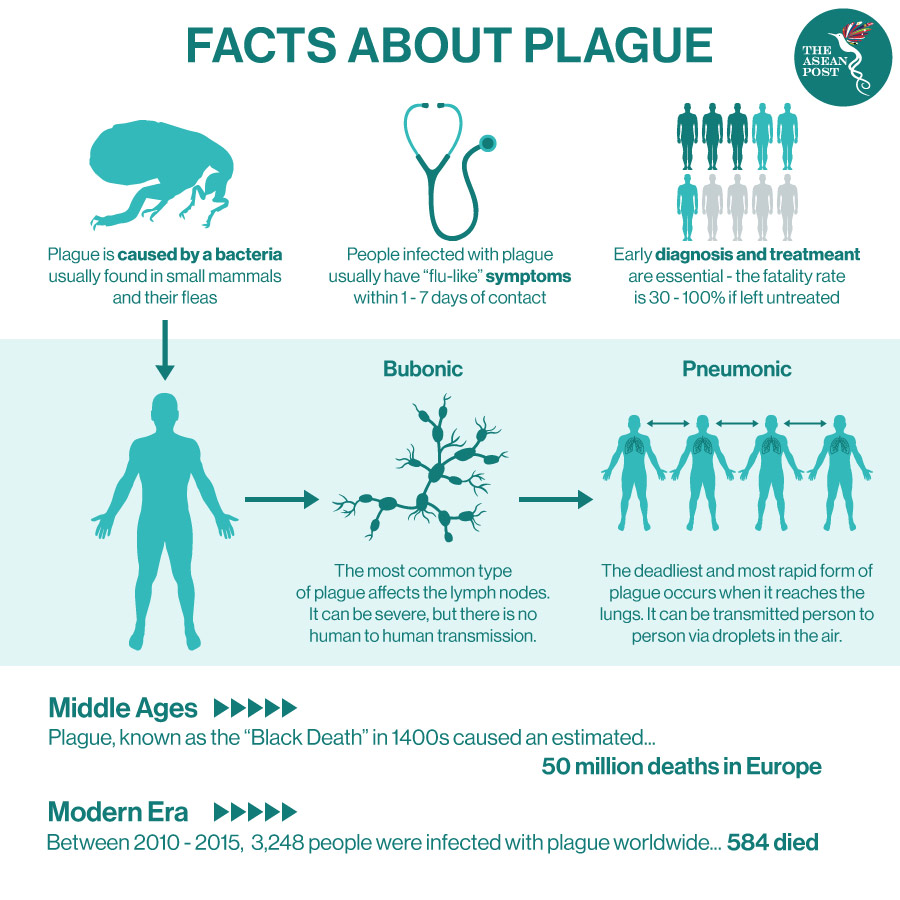A few days ago, the world was shocked by media reports of a suspected case of the bubonic plague – named the deadliest pandemic in human history, in the Chinese region of Inner Mongolia. A local herdsman was taken to a hospital after eating marmot meat.
“Preliminary test results revealed on Monday that he… (had contracted) the bubonic plague,” said Mongolia’s National Centre for Zoonotic Diseases (NCZD) in a statement.
Authorities also issued a third-level alert, the second lowest in a four-level system, warning people against hunting, eating or transporting potentially infected animals, particularly marmots, and to report any dead or diseased rodents. Marmots are large ground squirrels, a type of rodent that has historically been linked to plague outbreaks.
Officials from Russia’s Republican Ministry of Agriculture and Food have also urged citizens near the country’s border with Mongolia to not hunt marmots or eat marmot meat, and to be vigilant against insect bites.
Two other cases were confirmed in Mongolia’s Khovd province last week involving brothers who had eaten marmot meat. It was reported that some 146 people who came into contact with the men have been quarantined.
As the world battles a new coronavirus pandemic, could an old plague which caused the Black Death in the Middle Ages re-emerge?
Great Mortality
Plague is an infectious disease caused by the bacteria Yersinia Pestis, a zoonotic bacterium, usually found in small mammals and their fleas. There are three main forms of the plague; pneumonic, septicemic and bubonic.
In the bubonic form of plague, the bacteria enters by the skin via a flea bite and travels via the lymphatic vessels to a lymph node, causing it to swell. It is also transmitted to humans by inhalation of infected respiratory droplets. Untreated bubonic plague can progress into an infection of the lungs, causing pneumonic plague.
According to the United States’ (US) Centers for Disease Control and Prevention (CDC), when it comes to the bubonic plague, “patients develop sudden onset of fever, headache, chills, and weakness and one or more swollen, tender and painful lymph nodes (called buboes).”

News reports have stated that the bubonic plague, known as the Black Death - broke out between 1347 and 1351. The disease is believed to have originated in Central Asia or East Asia, but the epidemic reached parts of the Mediterranean from there and spread through trading ships.
Some historians suggest that the plague killed over 50 percent of the European population.
Is It A Concern?
The World Health Organisation (WHO) said it was monitoring the bubonic plague after being alerted by authorities in Beijing.
“Bubonic plague has been with us and is always with us, for centuries,” said WHO spokeswoman Margaret Harris. “At the moment, we are not considering it high-risk but we're watching it, monitoring it carefully,” she added.
In recent decades, between 1,000 and 2,000 worldwide cases of the plague are reported to the WHO each year, stated the CDC.
Although a plague vaccine has yet to be available, it can be successfully treated with antibiotics. Antibiotic treatment should begin as soon as a patient is diagnosed with a plague – preferably within 24 hours of the first symptoms. Pneumonic plague can be fatal within 18 to 24 hours of disease onset if left untreated, so early diagnosis and treatment is essential for survival.
In the wake of the COVID-19 pandemic, many are anxious and concerned at the possibility of the recent bubonic plague reports turning into another health crisis. However, some experts believe that “it’s very unlikely that this will become an epidemic,” wrote Bruce Y. Lee, professor of Health Policy and Management at the City University of New York.
“The availability of effective treatment has been a game changer. Before the age of antibiotics, the plague was a big deal, a very big deal. But this isn’t the 1300’s or even the 1800’s anymore. It’s 2020,” he explained.
Nevertheless, the United Nations has warned that more zoonotic diseases that pass from animals to humans such as the COVID-19 novel coronavirus are likely to emerge - citing growing demand for animal protein, unsustainable farming practices and the global climate crisis as some of the main drivers.
Related articles:
